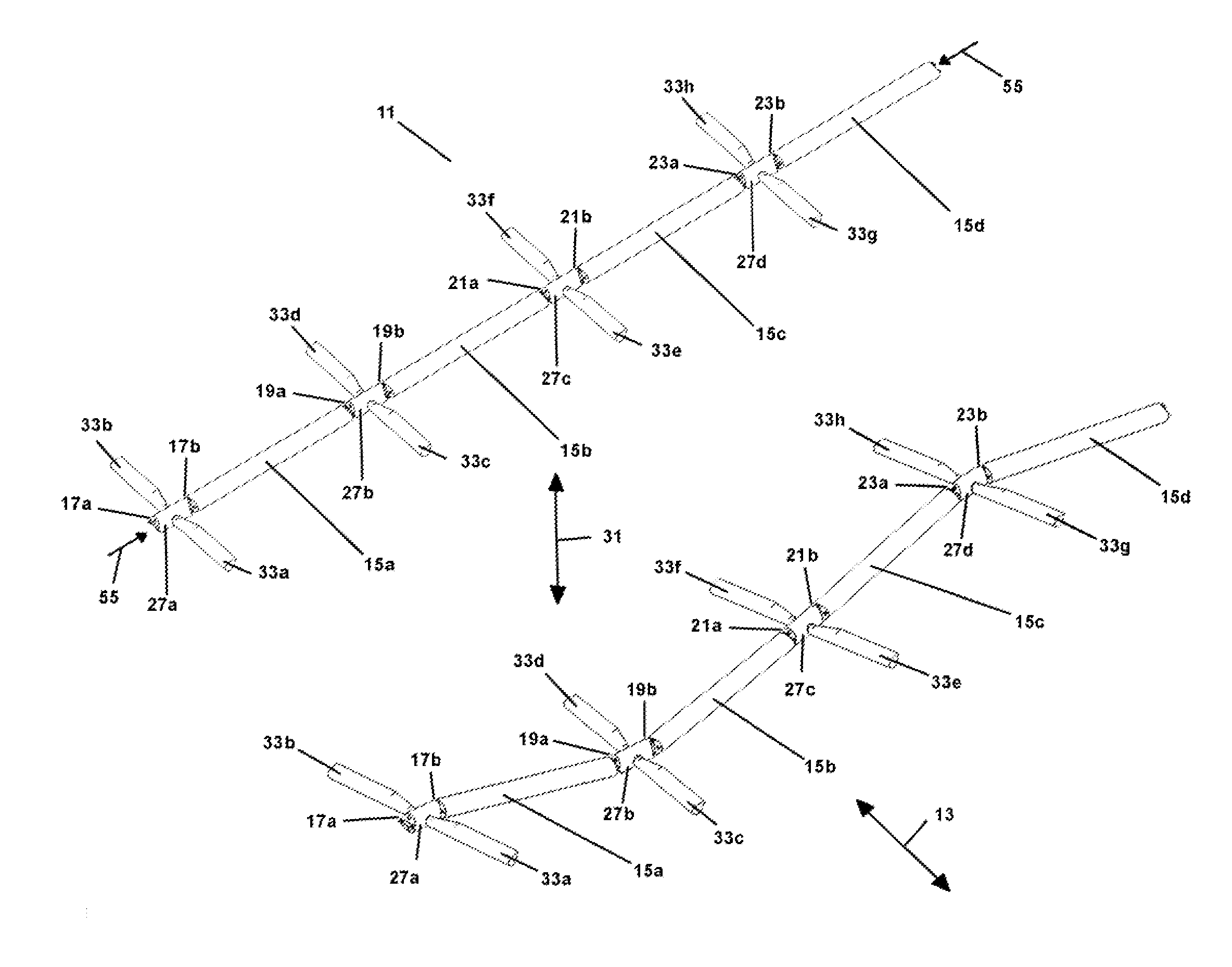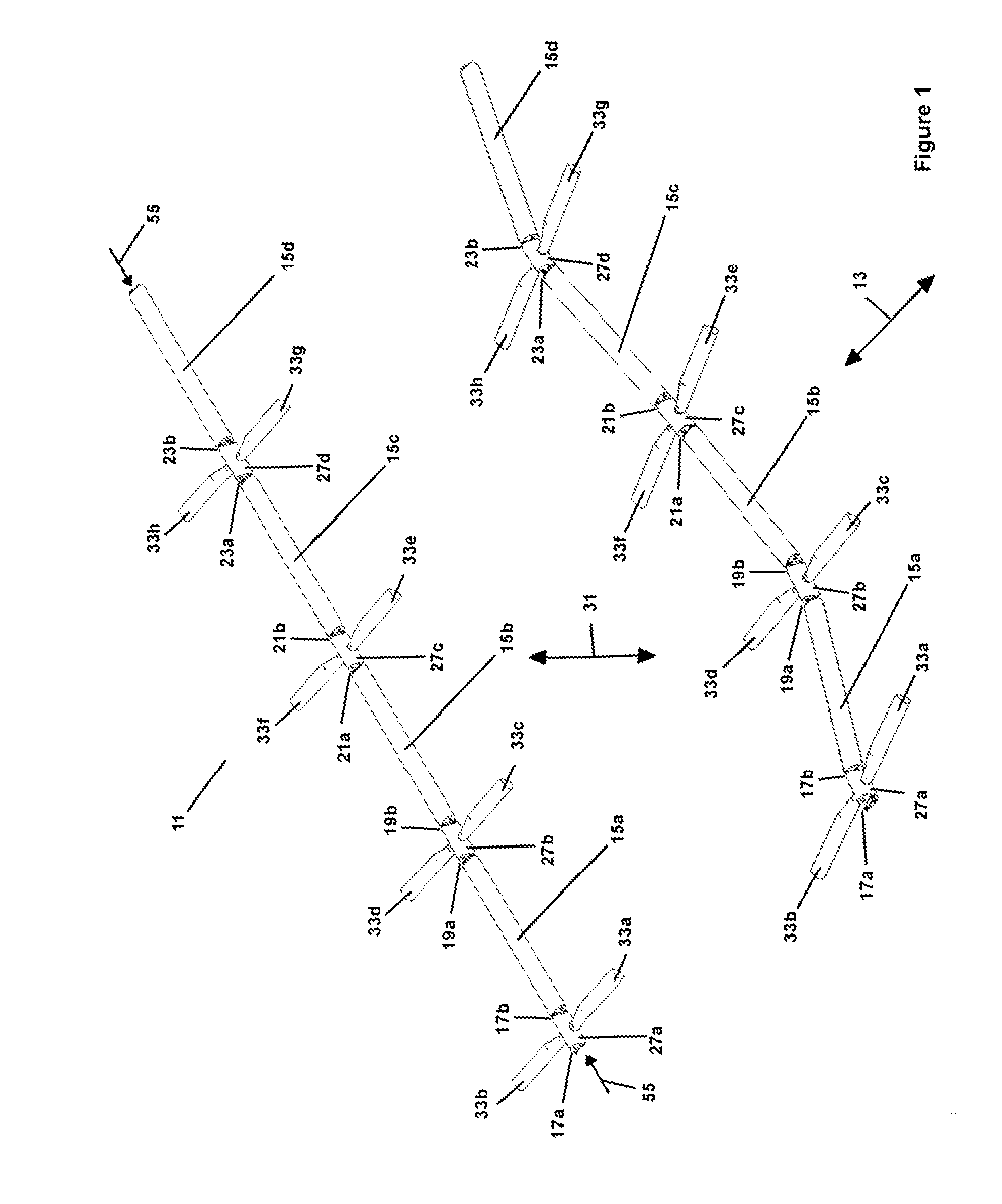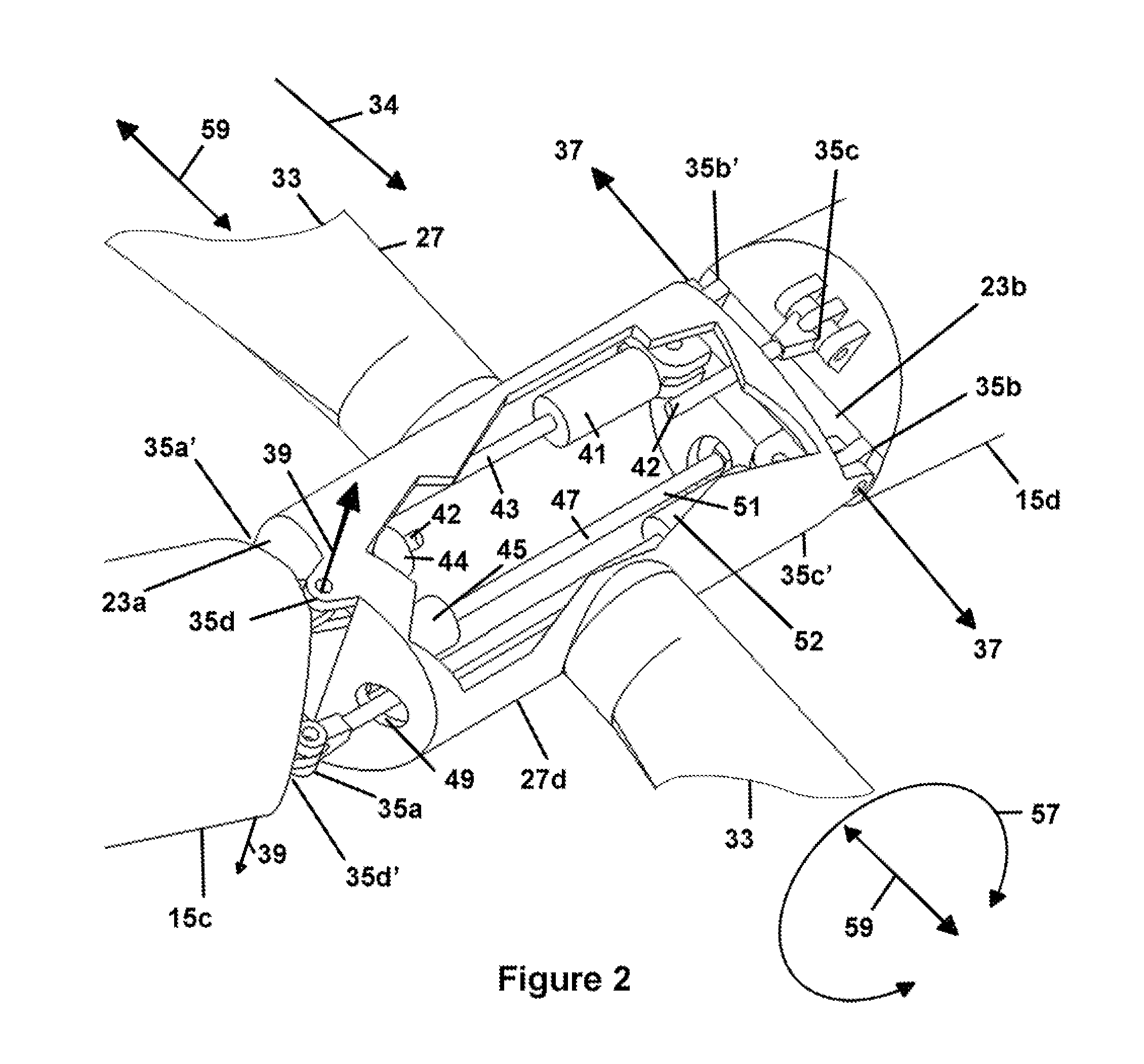Ocean Wave Energy Harnessing Device
a technology of harnessing device and ocean wave energy, which is applied in the direction of sea energy generation, machines/engines, mechanical equipment, etc., can solve the problems of long wavelength wave energy, inefficiency, damage to the pelamis system, etc., and achieves the effect of increasing the efficiency of the salter's duck, increasing the stability of the pelamis system, and extracting a greater amount of energy
- Summary
- Abstract
- Description
- Claims
- Application Information
AI Technical Summary
Benefits of technology
Problems solved by technology
Method used
Image
Examples
Embodiment Construction
[0032]The Pelamis System as is known and understood by those skilled in the art, is shown in FIG. 1, in two views, at rest generally by numeral 11 and in motion under the force of a transverse wave, shown generally by numeral 13. The moving parts of the Pelamis System are shown by boom elements 15a, 15b, 15c, and 15d, Salter's Duck Pelamis System hinge elements 27a-d and Salter's Duck Blade pairs 33a-b, 33c-d, 33e-f, and 33g-h. As would be known and understood by those skilled in the art, the number of Pelamis system boom elements shown is not restrictive but may be expanded to any suitable number of boom elements, according to the disclosed inventive principles.
[0033]The Pelamis System boom elements 15a-d are linked at respective joints 17a-b, 19a-b, 21a-b, 23a-b, to respective Salter's Duck hinge elements shown by numerals 27a-d, shown with respective blade pairs 33a-b, 33c-d, 33e-f, and 33g-h. As shown, in FIG. 1, joint 17a in Salter's Duck Hinge element 27a is shown without a li...
PUM
 Login to View More
Login to View More Abstract
Description
Claims
Application Information
 Login to View More
Login to View More - R&D
- Intellectual Property
- Life Sciences
- Materials
- Tech Scout
- Unparalleled Data Quality
- Higher Quality Content
- 60% Fewer Hallucinations
Browse by: Latest US Patents, China's latest patents, Technical Efficacy Thesaurus, Application Domain, Technology Topic, Popular Technical Reports.
© 2025 PatSnap. All rights reserved.Legal|Privacy policy|Modern Slavery Act Transparency Statement|Sitemap|About US| Contact US: help@patsnap.com



